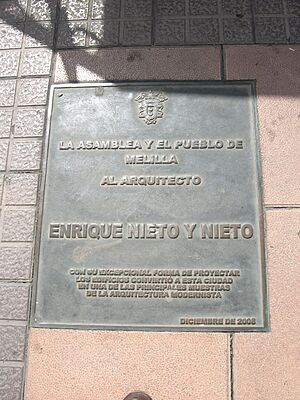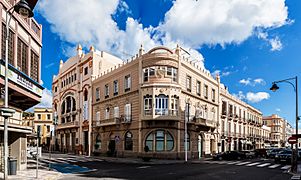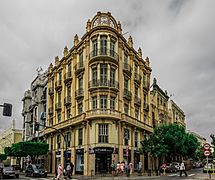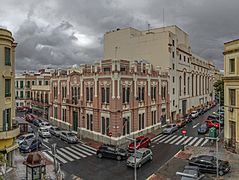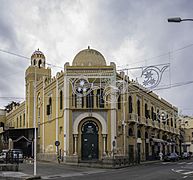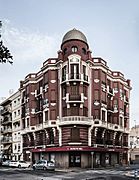Enrique Nieto (architect) facts for kids
Quick facts for kids
Enrique Nieto
|
|
|---|---|
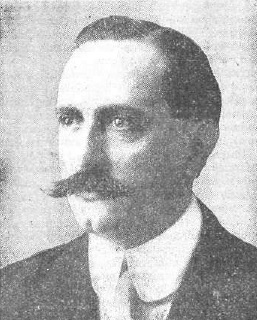 |
|
| Born | October 6, 1883 |
| Died | January 20, 1954 (aged 70) |
| Nationality | Spanish |
| Occupation | Architect |
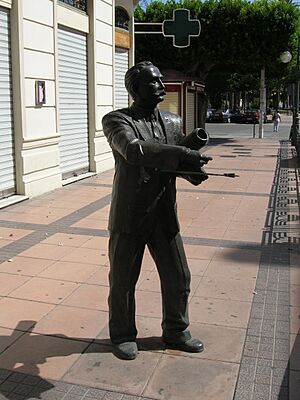
Enrique Nieto y Nieto (born October 6, 1883 – died January 20, 1954) was a famous Spanish architect. He was known for his unique Modernisme style. This style is a type of Art Nouveau that was popular in Spain.
Enrique Nieto was a student of the famous architect Antoni Gaudí. He followed Gaudí's style in his own designs. Nieto created many important buildings in Barcelona and Melilla. In 1939, he became the official city architect of Melilla. Melilla is a Spanish city in North Africa. It has the second largest collection of Modernisme buildings outside of Barcelona.
Contents
Designing Buildings for Melilla
Enrique Nieto played a huge part in shaping Melilla's look. He brought the Modernisme style to the city. This style uses lots of natural shapes like plants, flowers, and animals. It also features faces of women. The buildings often had brown and cream colors. Nieto's designs changed how Melilla looked forever. He even got ideas from the famous Mezquita de Córdoba (Cordoba mosque) for some of his work.
Places of Worship
Nieto designed several important religious buildings in Melilla. He created the main synagogue, called Or Zaruah (or Holy Light), in 1924. He also designed the Central Mosque. In addition, he built several churches for the Catholic community in the city.
Other Important Buildings
Enrique Nieto designed many other well-known buildings. These include the La Reconquista building and the Palacio Municipal. The Palacio Municipal was later renamed the Autonomous City Palace.
He also designed the National Theatre and Cinema building in Melilla. This building was made in the 1920s. It has a more geometric style compared to some of his other Modernisme designs.
Later Life
Enrique Nieto retired from his work in 1949. He passed away five years later, in 1954, from a heart attack. His buildings continue to be an important part of Melilla's history and beauty.
Selected Works
Here are some of the buildings Enrique Nieto designed:
- C/ García Cabrelles, 1 and 3 (1928)
- C/ General Prim, 7, 9, 10, 12, 16, 20 (1909–1910)
- Cine Nacional (National Cinema) (1929)
- Avenida Juan Carlos I, 1 (1915–1916)
- Edificio "La Reconquista" (1915)
- Edificio "El Acueducto" (1928)
- Casa de Tortosa (1914)
- Casino Militar (Military Casino) (1932)
- Sinagoga Yamín Benarroch (1924)
- C/ López Moreno, 2, 14 and 20 (1924, 1923 and 1928)
- Palacio de la Asamblea (Assembly Palace) (1933–1948)
- Edificio de "El Telegrama del Rif" (1912)
- Cámara de Comercio (Chamber of Commerce) (1913)
- Mezquita Central (Central Mosque) (1945)
- Avenida de la Democracia, 8
- Mercado del Real (Royal Market) (1932)
- C/ Cardenal Cisneros, 2 (1935)
- C/ Cándido Lobera, 2 and 4 (1933–1935)
- Monumento a los Héroes de España (Monument to the Heroes of Spain) (1941)
Gallery
See also
 In Spanish: Enrique Nieto y Nieto para niños
In Spanish: Enrique Nieto y Nieto para niños


